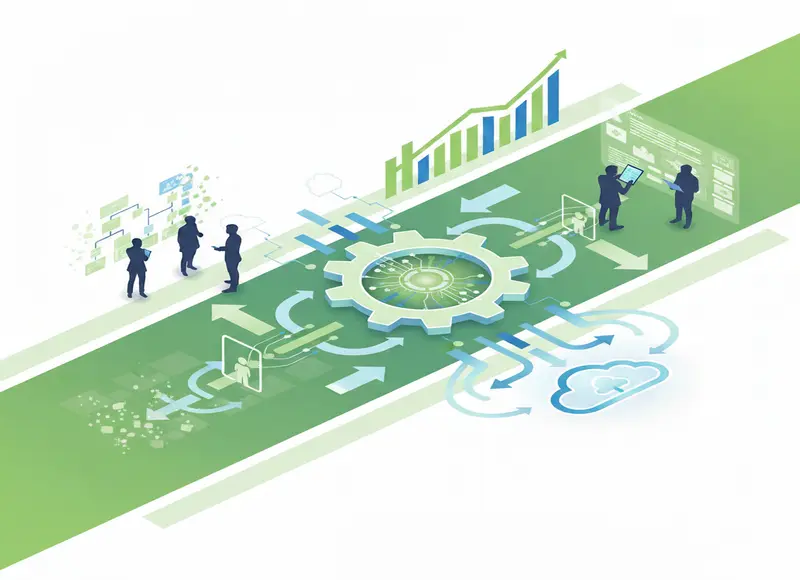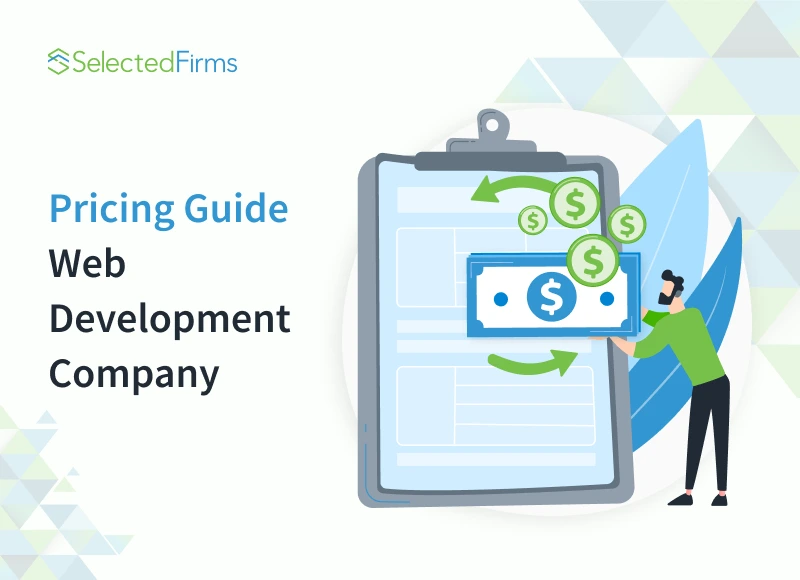Table of Contents
Stay ahead of the curve with our in-depth resources on updating large applications. Discover the latest strategies on Advanced Strategies for Updating Large Apps.

Today, big apps sometimes need a significant update to stay up-to-date and work well. Revamping an app shows growth and innovation, helping it stay relevant in the market. Moreover, it enables businesses to retain their users. a This is particularly important, considering that about 90% of users will quit an app if it performs poorly.
However, before aimproving your application, you need to plan carefully and understand the app's basics. Also, think about how you can add new features without losing what made it great in the first place.
To guide you in this process, we’ll provide steps you can follow to update your large app. We'll also discuss user experience optimization strategies and explore often-overlooked aspects like data migration and post-launch support. When transitioning from MySQL to BigQuery, it’s essential to ensure that the new structure is designed to accommodate BigQuery’s capabilities and optimize performance
Let’s dive in.
Assess the Need for an App Update
Determine the reasons for your app revamp before you start the process. Ask relevant questions like:
- Has there been negative feedback regarding the features of my app?
- What are my customers complaining about?
- Is my app secure and up to date?
- Am I applying the best practices in the industry?
When you ask these questions, you ensure that the decision for a new software version is data-driven, necessary, and designed to yield significant results. During your evaluation, you may realize that some of your concerns with the app are not fundamental and may only require minor updates, saving you time and money.
In some cases, however, you may discover issues that require major changes, such as rewriting the code or updating the UI.
Consider the Benefits And Disadvantages
A thorough app revamp is a cost-intensive and time-intensive venture. So, before you decide to undergo a software revamp, consider the benefits and possible drawbacks.
Pros
- Revamping an app improves code efficiency, enhances performance for higher traffic, speeds up loading, and upgrades user design and experience. a aThis ensures that your product is scalable without compromising performance.
- During revamping, you will update the security protocol to reduce the risks of bugs and hacking for a more secure environment.
- You get a fresh start, free of bugs or issues, with better maintenance and an up-to-date code base.
- After redevelopment, your product is in line with evolving best business practices, user expectations, and advancements in technology.
Cons
- Building a web app is expensive because of the complex changes to be made to the codebase.
- During the transition period to the new version, your app will not be in operation for a while, as it is a time-intensive process.
- While redeveloping an app, you may discover more bugs and errors, lose some features, and even lose some users who may not appreciate the updates.
- You may also have to limit the updates to the current version of your app because most of your attention will be shifted to the new app version.
Draw a Revamping Plan
Revamping a large app is an elaborate task. A comprehensive plan ensures a solid action plan to prevent missed deadlines, budget overruns, and subpar results.
Research
Conduct thorough research to garner relevant information that highlights improvements to the app. You can get this data from resources, such as a survey from current users, internal interviews, or current KPIs for a more data-informed decision.
Try New User Experience Flows
Your customers evolve with shorter attention spans, higher expectations, and growing reasons to switch to your competitors. So, however great your old UX flow was, make it better to address user behaviors, interests, and needs, especially since you are going for a complete app revamp.
Stick To MVP First
Yes! Your old app had a boutique of impressive features, but while revamping, you should start with only the crucial features to reduce the chance of risks. After all, less is more, right?
With subsequent updates, you can introduce other complex features and increase the scope of your app. But until then, your users can enjoy your bug-free MVP.
Budget Carefully
Ensure that there are enough resources to complete the steps in your app redevelopment successfully. Factor in the costs of development time, testing, infrastructure, and any needs to get your budget idea.
Stay flexible
While you make and stick to all these elaborate plans, remember to stay flexible. This could involve listening to new ideas, pausing on a design idea, or switching up the priorities of features on the app. Either way, ensure that your decisions are geared towards achieving the desired outcomes.
Examine Technical Aspects
Technical choices, like the tech stack, greatly affect user experience, app performance, and the success of app re-engineering. Here are the aspects of your tech to consider:
Feature 1: App Infrastructure
This technology, including servers, databases, and networks, enables your application to work correctly. Migrating servers to the cloud, using vendors like AWS, Azure, and Google Cloud, can enhance scalability flexibility, reduce costs, and boost security and reliability.
Also, align your environment so that the software development and testing environments are similar to the production environment. This will ensure the smooth functioning of the app features for better user experience and reduce the risk of errors.
Feature 2: Security
As the tech world evolves, black hats aren’t left behind. Cyberattacks are now more advanced and costly. Statista reports that the average cost of a data breach in the USA is $9.44 million. This shows that you must prioritize the security of your app.
Employ the latest security updates to plug vulnerabilities in software and block unauthorized access to systems and data as you revamp an app.
Feature 3: Application Architecture
Determine the ideal fundamental architecture for your app, depending on its goal and scope. You can choose monolithic, microservers, serverless, or event-driven, but there is no one-size-fits-all approach here.
Monolithic Architecture: This is a service that handles everything. It's simple to manage for starters, but adding a new feature later could affect the whole structure.
Microservices Architecture: Microservices are similar to having a collection of small houses (microservices) connected by walkways. Each microservice handles a specific task. This could be a login or product search. This setup makes it easier to add new features and fix problems without affecting others.
Serverless Architecture: Instead of renting an entire server, you only use the server space that you need. This is important if your application does not require a lot of resources.
Event-Driven Architecture: Here, different parts of the service respond to specific events, like a custom action is triggered when a user makes a purchase.
You can also choose between containerization and CI/CD approaches that speed up and automate app development and deployment.
Containerization: As the name implies, Containerization involves packaging software applications with all their dependencies (libraries, frameworks, configurations) into a standard unit, aka “containers.” These containers can be easily moved between different computing environments, isolating the environment for consistent behavior regardless of the fundamental infrastructure.
Continuous Integration and Continuous Delivery: It is a way to automatically handle the software development process. It automatically combines code changes, tests them, and deploys software. With CI/CD, developers can automatically update and test their code and release it with little or no manual effort.
Feature 4: APIs and 3rd-Party Services
A comprehensive product revamp involves several significant steps. Consider integrating 3rd party services to provide the required functionalities. For example, delegate email marketing to MailChimp, document signatures to DocuSign, and authentication and authorization to Auth0. With these integrations, you save time and resources, improve user experience, enhance security, and minimize maintenance efforts.
Feature 5: Refactoring
While you are revamping your app, ensure not to reuse some code snippets, even if they worked well in the old app. Think of it as borrowing wood from bug-infested furniture to build new ones. You could run the risk of transferring bugs and errors over to the new software.
Besides, some of the old codes may not work properly in the new environment, and just copying old codes doesn’t allow much room for innovative ideas.
Forget your old codes; write new ones suitable for your new software and achieve faster and smoother performance and an improved overall user experience.
Feature 6: Speed and Overall Performance
Improve the speed and performance of your app to eliminate any lag time. Here are some scenarios of performance challenges you can address:
- For feature-rich apps with heavy users, ensure that there is a quick response time after a request is made. In-memory data grids are your best bet to store and retrieve frequently asked data next to the server.
- Use WebSockets to keep your app communications flowing. They are bidirectional tools that automatically send new data to a user, eliminating the need to refresh a page or pull requests. This allows you users to engage with the app in real-time
- Include server scaling features to speed up load times and eliminate system crashes at peak hours. This feature allows your system to scale up during peak hours to accommodate the load and automatically scale down to reduce costs when the usage is less.
- Improve data access by optimizing data and implementing strategic database queries and data caching. This will increase the speed of your app and improve its overall performance.
Feature 7: Data Structure and Migration
Rewriting a large app aoften requires making changes to the database entities. Unfortunately, these changes will break existing code that relies on the old structure and lead to bugs and errors in the system.
In this case, you would need to employ data migration to address how the new app will handle outdated data and prevent errors within the app after deployment.
Data migration typically involves creating new database entities based on the old data. Once the new data structure is ready, do a test drive. Create a separate environment to see how the new data interacts with the new app. This is your chance to catch bugs and validate workflows before hitting production.
If all goes well in the test environment, it's time to repeat the data transformation on the real data in your production environment.
Consider other Product Areas
A successful app revamp goes beyond writing new code. Here are some product considerations to ensure that smooth transition:
1. User Onboarding and Support: Users will react differently to the software update. While some will accept and adopt the changes, others may struggle to adjust. But be proactive by providing clear and concise tutorials to minimize that confusion. Even though 100% user satisfaction is an ambitious goal, aim for a positive reception from more of your customers.
2. Customer Service: Your customer service team will be on the front lines, facing a surge of user feedback – positive and negative. So, equip your support team with the knowledge and resources to effectively guide users through the new app. Also, note that this is your opportunity to gather valuable user opinions and concerns for future updates.
3. User Analytics: Integrate analytics from day one of your launch to track user behavior, identify areas for improvement, and measure the success of your revamp.
4. Supporting Apps: Don't forget your supporting ecosystem. Update any Admin panels or supportive apps to sync with the new app's functionalities. This reduces the need for manual tasks and boosts employee productivity.
5. Legal Considerations: Update your Terms of Use and Privacy Policy. Include changes made in the new app. Ensure all documents comply with laws, especially data protection regulations like GDPR and CCPA.
Testing and Quality Assurance
Like a new app, any revamped app will require rigorous testing before launch to check that features, performance, and user experience are top-notch. The average app loses 77% of its daily active users (DAUs) within the first 3 days after installation, and this is often attributed to low tolerance of users when app features don’t work.
So, employ a multi-faceted testing strategy to catch and fix errors before launch to protect user experience and ensure that the new app meets the objectives of revamping, including
Manual Testing: Here you employ the services of skilled QA professionals to systematically evaluate the app’s features and functions. This practical approach offers a detailed examination of user interfaces and experience, functionality, and user flows. The professionals will also identify subtle errors that may pass automated tests.
Automated Testing: Automated testing accelerates the process, rapidly executing multiple test cases to ensure essential functionalities remain efficient after code changes. This provides a consistent and reliable means of detecting any regressions.
User Acceptance Testing: It involves users operating the software product and providing feedback of whether it meets their requirements. The information gathered can help in making adjustments before launching the app.
Note: Do load and stress tests to evaluate the app functions under various conditions and user traffic. This will check that the app runs smoothly, even during heavy traffic and stressful conditions.
App launch
After meticulously revamping your app, invest in a robust marketing strategy to effectively push it to your target audience. Employ multiple approaches, including content marketing, social media engagement, email campaigns, and paid advertising to generate excitement, build anticipation, and share the value proposition of the revamped software.
Providing solid post-launch product support is essential to collect user feedback and address any concerns or challenges; plus, effective support promotes user satisfaction and builds trust and loyalty.
You can also build a community around your product. Set up forums, user groups, or online communities for your users to share experiences and recommendations, exchange ideas, and offer mutual support.
Conclusion
You want your app to stay relevant and in style. That is what revamping an application offers. Your re-engineered app will employ the latest technologies and improve overall performance and security. Follow the steps in this comprehensive manual as you plan, consider product and technical aspects, and test to achieve a new, top-notch app that attracts more users and boosts your business.









